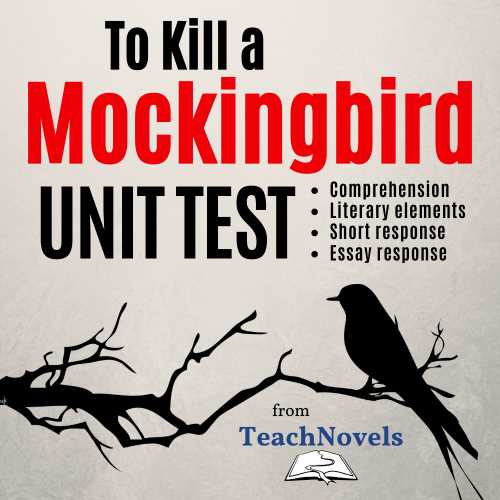
Understanding the central themes and characters of this classic novel is essential for mastering any related assessments. The story, set in a deeply segregated Southern town, explores complex issues of justice, race, and morality. By closely examining the narrative and its significant moments, students can gain a clearer perspective on its enduring impact.
To succeed in the evaluation, it’s important to grasp the development of key figures such as the compassionate father, the young narrator, and the troubled antagonist. Additionally, paying attention to symbolic elements that shape the plot will deepen your comprehension and help connect abstract concepts to real-world issues.
Focus on the moral dilemmas faced by the characters, how prejudice influences their decisions, and the role of community in shaping individual outcomes. A thorough understanding of these aspects will ensure a comprehensive grasp of the material and increase your chances of performing well.
Key Themes in To Kill a Mockingbird
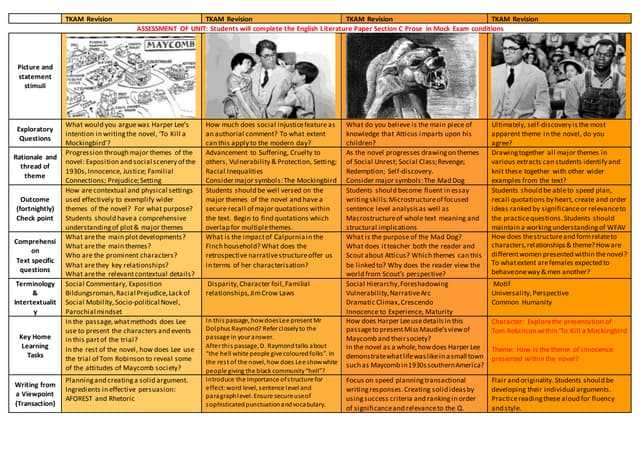
The novel explores a range of powerful and thought-provoking topics, each contributing to its lasting relevance. The story delves into human behavior, societal issues, and moral conflicts that shape the characters’ lives. By understanding these themes, readers can better appreciate the depth of the narrative and its reflection of real-world challenges.
Some of the key themes include:
- Racial Injustice: The novel highlights the systemic racism present in the Southern United States during the 1930s and the ways in which it affects individuals and communities.
- Morality and Ethics: Through characters like Atticus Finch, the story examines the importance of doing what is right, even when it is difficult or unpopular.
- Childhood and Growth: Scout’s coming-of-age journey reflects the loss of innocence and the realization of the complexities of human nature and society.
- Courage and Integrity: Many characters, especially Atticus and Mrs. Dubose, demonstrate the strength of character required to face personal and societal challenges.
- Empathy: The novel emphasizes the importance of understanding others’ perspectives and walking in their shoes to fully comprehend their actions and experiences.
Each of these themes is intricately woven into the narrative, providing insight into both the characters’ lives and the broader social issues of the time. By reflecting on these central ideas, readers can develop a deeper understanding of the novel’s message and its universal relevance.
Understanding the Historical Context
The setting of the story plays a crucial role in shaping the events and characters’ experiences. The novel is deeply embedded in the social and political climate of its time, reflecting the challenges faced by individuals in a racially segregated society. Understanding this backdrop is essential to grasp the full significance of the narrative and the struggles depicted within it.
The events take place during the 1930s, a period marked by the Great Depression in the United States, when economic hardships were widespread. This difficult environment influenced the behaviors, attitudes, and opportunities of many people, especially in the South. Additionally, the era was characterized by strict racial divisions, particularly in the Southern states, where African Americans were often denied basic rights and subjected to deep prejudice.
These historical realities are reflected in the lives of the characters, especially through the trial of Tom Robinson, where racial inequality is put at the forefront. By understanding the historical context, readers can better appreciate how societal pressures and biases impact the lives of those within the story.
Character Analysis of Atticus Finch
Atticus Finch is a central figure whose actions, beliefs, and integrity drive much of the narrative. As a father, lawyer, and moral compass of the story, his character serves as a guiding force, representing justice, fairness, and empathy in a world filled with prejudice and corruption.
Atticus’s role as a father is marked by his deep love and respect for his children, Scout and Jem. He strives to teach them valuable life lessons, emphasizing the importance of morality, empathy, and doing what is right even when it is not easy. His calm and thoughtful approach to parenting contrasts with the more traditional views held by others in Maycomb, yet his influence is undeniable.
Professionally, Atticus is a lawyer who stands firm in his commitment to justice. He takes on the defense of Tom Robinson, a black man falsely accused of raping a white woman, despite knowing the difficulties and dangers he will face in doing so. Atticus’s belief in the legal system and his dedication to fairness make him a symbol of integrity in a society rife with inequality.
What sets Atticus apart is his ability to see the humanity in others, regardless of their race, background, or social status. His actions and words challenge the prejudices of his time, making him an enduring symbol of moral strength and righteousness.
Jem and Scout’s Coming-of-Age Journey
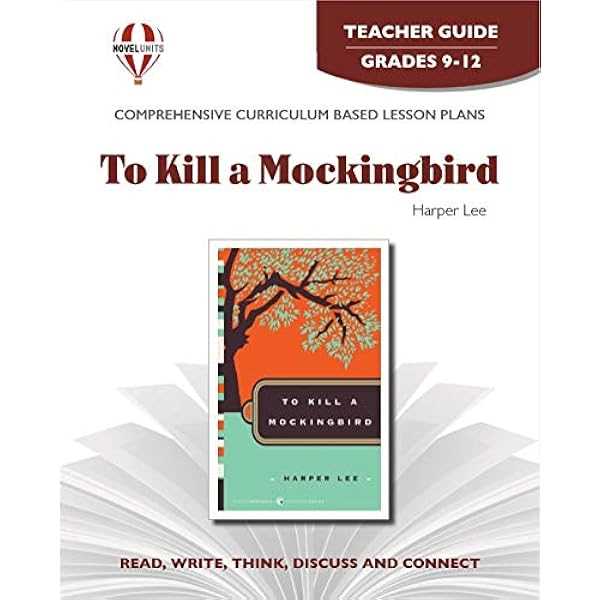
The story of Scout and Jem is at its core a narrative of personal growth and maturation. As they navigate their childhood in a complex and often unjust world, they experience pivotal moments that challenge their understanding of right and wrong. Their journey from innocence to a deeper awareness of the adult world mirrors the larger themes of morality, courage, and social inequality explored throughout the book.
For Scout, the transition from a carefree young girl to a more thoughtful and perceptive individual is marked by her increasing awareness of the racial and social divisions within her community. Through her eyes, readers see the harsh realities of the world, but also the moments of kindness and understanding that offer hope. Her relationship with her father, Atticus, plays a key role in shaping her values and sense of justice.
Jem’s path is similarly defined by his evolving sense of morality. As an older brother, he begins to grasp the complexities of the world around him. His experiences, particularly with the trial of Tom Robinson, cause him to struggle with the disparity between the ideals of justice and the realities of prejudice. By the end of the story, Jem’s loss of innocence is stark, as he begins to understand the full weight of the injustice that surrounds him.
Both characters undergo significant changes that reflect their growth. The lessons they learn are hard-earned, but ultimately they shape the people they will become. Their development illustrates how the events of life can shape a person’s worldview, and how, despite the challenges they face, they begin to understand the importance of empathy, courage, and standing up for what is right.
Symbolism of the Mockingbird
In the story, a particular bird serves as a powerful symbol of innocence and goodness. The creature represents purity, untainted by the corruption and prejudice of the world. Throughout the narrative, this symbol is used to highlight the injustice faced by those who are harmless but wrongfully persecuted.
The Innocence of the Defenseless
The symbolism is most evident in characters who embody innocence, like Tom Robinson and Arthur “Boo” Radley. Both are individuals who, in their own way, represent those who mean no harm yet become victims of societal misunderstanding and malice. Just as the bird does not harm anyone, neither do these characters. Their suffering is a direct result of prejudice and fear from others, making them symbolic of the unjust treatment of the vulnerable.
The Consequences of Harm
When individuals are hurt or wronged despite their innocence, it serves as a profound commentary on the flaws of the world. The metaphor of the bird encourages readers to recognize the need for protection and empathy toward those who do not deserve harm. By understanding this symbolism, the reader is invited to reflect on how often innocent individuals are mistreated, merely because they are misunderstood or different.
Role of Racism in the Story
The pervasive presence of racial discrimination is a central theme that shapes the events and characters in the narrative. The story unfolds in a community where societal norms and deeply ingrained prejudices influence the lives of both the oppressed and the oppressors. Racism, in this context, is not just a backdrop but a driving force that dictates much of the characters’ actions and decisions.
Through the trial of Tom Robinson, the novel examines how racial bias affects the justice system. Despite clear evidence proving his innocence, the character is wrongfully accused due to the color of his skin. This miscarriage of justice highlights the ways in which racism distorts truth and fairness, creating an atmosphere of inequality. As Atticus Finch defends Tom, he stands as a moral beacon, challenging the racism embedded in the town’s culture.
Racism also impacts personal relationships, shaping how characters view each other based on race. The fear and mistrust toward characters like Boo Radley, despite his harmless nature, reflect the broader societal tendency to judge others unfairly due to stereotypes. By focusing on the harmful effects of prejudice, the narrative underscores the need for empathy, understanding, and a willingness to challenge racial assumptions.
Important Quotes to Remember
Throughout the story, certain phrases and passages stand out as powerful reflections of its themes and moral lessons. These memorable quotes encapsulate the core messages of justice, integrity, and empathy that are woven throughout the narrative. Remembering these key lines can deepen understanding and provide insight into the characters’ motivations and the societal issues they confront.
- “You never really understand a person until you consider things from his point of view.” – Atticus Finch
- “It’s never an easy thing to do, doing what’s right.” – Atticus Finch
- “Mockingbirds don’t do one thing but make music for us to enjoy. They don’t eat up people’s gardens, don’t nest in corncribs, they don’t do one thing but sing their hearts out for us. That’s why it’s a sin to kill a mockingbird.” – Miss Maudie
- “I wanted you to see what real courage is, instead of getting the idea that courage is a man with a gun in his hand. It’s when you know you’re licked before you begin, but you begin anyway and see it through no matter what.” – Atticus Finch
- “Atticus, he was real nice.” “Most people are nice, Scout, when you finally see them.” – Scout and Atticus Finch
These quotes reflect key ideas that form the backbone of the story, such as empathy, moral integrity, and standing up for what is right, even when faced with adversity. By remembering and reflecting on these lines, readers can gain a deeper appreciation for the novel’s enduring impact on discussions about justice, humanity, and social change.
Key Events That Shape the Plot
The story’s development is defined by a series of pivotal moments that significantly alter the characters’ perspectives and drive the narrative forward. Each key event reveals deeper truths about the characters, their relationships, and the societal challenges they face. These moments not only propel the storyline but also underline the central themes of justice, morality, and personal growth.
The Trial of Tom Robinson
The trial of Tom Robinson serves as a major turning point in the plot, exposing the deep-seated racial prejudices of the community. This event forces the characters, especially Scout and Jem, to confront the harsh realities of inequality and injustice that permeate their society. It becomes a crucial moment of moral awakening for them as they witness the unfairness of the trial and the subsequent consequences.
The Development of Boo Radley’s Story
Another significant moment in the narrative is the gradual revelation of Boo Radley’s story. Initially perceived as a mysterious and frightening figure, Boo’s character is slowly humanized through the children’s evolving perceptions. The eventual discovery of his true nature culminates in a moment of selfless courage, further developing the themes of empathy and understanding.
| Event | Impact on Characters | Themes Highlighted |
|---|---|---|
| The Trial | Scout and Jem’s loss of innocence; Atticus’s moral stance | Justice, Racial Inequality, Moral Integrity |
| Boo Radley’s Revealing | Change in Scout and Jem’s perception of fear and compassion | Empathy, Courage, Understanding |
| Tom Robinson’s Death | Heightened sense of injustice; Scout’s growing awareness of the world | Injustice, Moral Conflict, Social Awareness |
These events are just a few examples of how critical moments in the narrative shape the characters’ growth and understanding of the world. Each event plays an essential role in deepening the novel’s exploration of complex social issues, offering insights into the human condition and the importance of standing up for what is right.
Atticus Finch as a Moral Hero
Atticus Finch stands as a powerful symbol of integrity, wisdom, and justice throughout the narrative. His unwavering commitment to doing what is right, despite the societal pressures and personal risks, establishes him as a figure of moral heroism. As a father, lawyer, and community leader, Atticus represents the highest ideals of fairness and compassion, inspiring those around him to challenge their own beliefs and fight for equality.
In the face of overwhelming opposition, Atticus remains steadfast in his belief in justice. His defense of Tom Robinson, an innocent man wrongfully accused of a crime due to racial bias, showcases his moral courage. Throughout the story, Atticus teaches his children, Scout and Jem, the importance of empathy, understanding, and standing up for what is right, even when the odds are against them.
| Characteristic | Example from the Story | Impact on Others |
|---|---|---|
| Integrity | Defending Tom Robinson despite the town’s prejudices | Inspires Scout and Jem to develop their own moral compass |
| Courage | Continuing to stand for justice in the face of public scorn | Encourages others to challenge the status quo |
| Empathy | Teaching Scout to understand others’ perspectives | Helps the children appreciate the complexities of human nature |
Atticus’s actions, both in and out of the courtroom, demonstrate the importance of moral clarity in the face of adversity. His role as a moral hero is not just about his actions in the trial, but also in his everyday behavior–showing patience, kindness, and humility. He is a role model for both his children and the readers, proving that true heroism lies in the courage to act with integrity, regardless of the consequences.
Relationship Between Scout and Dill
The bond between Scout and Dill is one of the most heartwarming and significant relationships in the story. As close childhood friends, their companionship allows them to experience the world of Maycomb together, sharing innocent adventures and grappling with the complexities of the world around them. Dill’s presence in Scout’s life brings a sense of curiosity and excitement, while Scout offers Dill a sense of belonging and understanding. Their friendship helps both characters grow as they encounter new challenges and confront the complexities of human nature.
Shared Childhood Adventures
Scout and Dill’s adventures are a central part of their relationship, often providing moments of humor and light-heartedness amidst the more serious themes of the story. Their curiosity about the mysterious Boo Radley, for example, leads them to create elaborate plans to make contact with him. These playful actions symbolize their desire to understand the unknown and their innocent approach to the world around them.
- Exploring the Radley house and attempting to communicate with Boo
- Playing imaginative games together, often involving the townspeople
- Supporting each other during times of personal growth and challenge
Emotional Support and Growth
While their adventures bring joy, Scout and Dill also provide emotional support to each other. Dill’s vulnerability, stemming from his troubled family life, is balanced by Scout’s unwavering loyalty and protectiveness. In turn, Dill offers Scout a different perspective on life, helping her navigate her understanding of social expectations and family dynamics.
- Scout comforting Dill when he becomes upset over the injustice of the trial
- Shared experiences of love and loss that deepen their bond
- Their connection strengthens Scout’s understanding of empathy and friendship
Through their relationship, both characters undergo a transformation. Dill helps Scout see the world beyond her immediate surroundings, while Scout’s ability to defend and protect Dill reinforces her developing moral beliefs. Their friendship exemplifies the themes of innocence, loyalty, and emotional growth, making it a vital part of the narrative.
The Significance of Maycomb’s Setting

The town of Maycomb plays a crucial role in shaping the events and themes of the story. Its rural, close-knit nature mirrors the traditional values and deep-seated prejudices that influence the characters’ actions and attitudes. As a fictional backdrop, Maycomb is not just a physical setting but a symbol of societal norms, division, and change. Through its streets, homes, and institutions, the story unfolds against a backdrop that reflects both the innocence and the complexities of the time period.
The Role of Maycomb in Social Dynamics
Maycomb is a microcosm of the larger societal struggles during the time in which the story is set. The town’s social hierarchy and racial divisions create a tense environment, with certain groups holding power and others struggling against oppressive systems. This setting reflects the systemic inequalities that are central to the narrative and plays a significant role in the characters’ development and interactions.
| Social Group | Role in Maycomb | Impact on the Story |
|---|---|---|
| Wealthy Families | Hold social power and influence | Shape public opinion and the legal system |
| Working Class | Often caught between social expectations and personal beliefs | Serve as a reflection of the broader town’s values |
| Black Community | Marginalized and discriminated against | Represents the injustices of the social system |
Geographical Features and Atmosphere
The town’s physical environment–its small houses, dirt roads, and the courthouse at the center–adds layers to the story’s atmosphere. The courthouse, in particular, serves as a focal point for the conflict and drama, symbolizing justice and its failures. The isolation of Maycomb from larger cities also underscores the slower pace of social change, making it a place where long-standing beliefs and prejudices persist for generations.
Overall, Maycomb’s setting is not just a backdrop for the story but a powerful force that shapes the characters and the themes of the narrative. Through its portrayal of both physical and social environments, the town becomes a character in itself, representing the challenges of confronting inequality, ignorance, and change.
The Trial of Tom Robinson Explained
The trial of Tom Robinson is one of the most pivotal events in the story, representing the clash between justice and prejudice in a deeply divided society. The trial serves as a platform for examining the social, racial, and moral issues that define the characters’ lives and choices. It is a courtroom drama that reveals the flaws within the legal system and highlights the injustices faced by marginalized individuals, particularly within a racially segregated community.
The trial is centered around accusations that Tom Robinson, an African American man, assaulted a white woman, Mayella Ewell. Throughout the trial, the characters’ biases and the town’s racial divide are laid bare, revealing the challenges Tom faces in receiving a fair trial. Despite the lack of credible evidence, the racial prejudices of the time significantly impact the outcome of the trial.
The Key Events in the Trial
| Event | Significance | Impact on the Outcome |
|---|---|---|
| Accusation of Assault | Mayella Ewell accuses Tom of assaulting her | Sets the stage for the trial, despite no physical evidence |
| Testimonies of the Ewells | The Ewells provide inconsistent and unreliable testimonies | Reveals flaws in the prosecution’s case, yet the jury’s prejudice prevails |
| Atticus Finch’s Defense | Atticus presents a compelling argument, pointing to Tom’s innocence | Highlights the lack of evidence against Tom, but fails to change the jury’s bias |
| Jury’s Verdict | Despite the evidence, the jury convicts Tom Robinson | Demonstrates the powerful influence of racial prejudice in the judicial system |
Throughout the trial, Atticus Finch, Tom Robinson’s lawyer, works tirelessly to prove his client’s innocence, showing that the accusations are based on a combination of falsehoods and racial biases. However, the deeply ingrained racism of the community influences the jury’s decision, despite the compelling defense. The trial ultimately underscores the systemic injustices that affect not only Tom Robinson’s fate but also the moral integrity of the society as a whole.
The trial is a turning point for several characters, especially Scout and Jem, who witness firsthand the corrupting power of prejudice and the flaws of the justice system. Although Tom Robinson is convicted, the trial leaves a lasting impression on the town and serves as a catalyst for the characters’ personal growth and their understanding of right and wrong.
Bob Ewell as the Antagonist
In any story, the antagonist plays a key role in challenging the protagonist’s beliefs, creating conflict, and driving the narrative forward. In this case, Bob Ewell serves as the primary source of opposition, embodying the deeply rooted racism and societal injustices that plague the community. His actions and behaviors are central to the story’s exploration of inequality, prejudice, and the moral dilemmas faced by the characters.
Bob Ewell is a character who represents the negative aspects of his society, including ignorance, hate, and a deep-seated sense of superiority. His actions are not just motivated by personal grievances but are also a reflection of the systemic racism that shapes the world around him. His role as the antagonist is not only critical to the conflict in the narrative but also to the broader themes of injustice and morality that the story seeks to address.
Bob Ewell’s Actions Against Tom Robinson
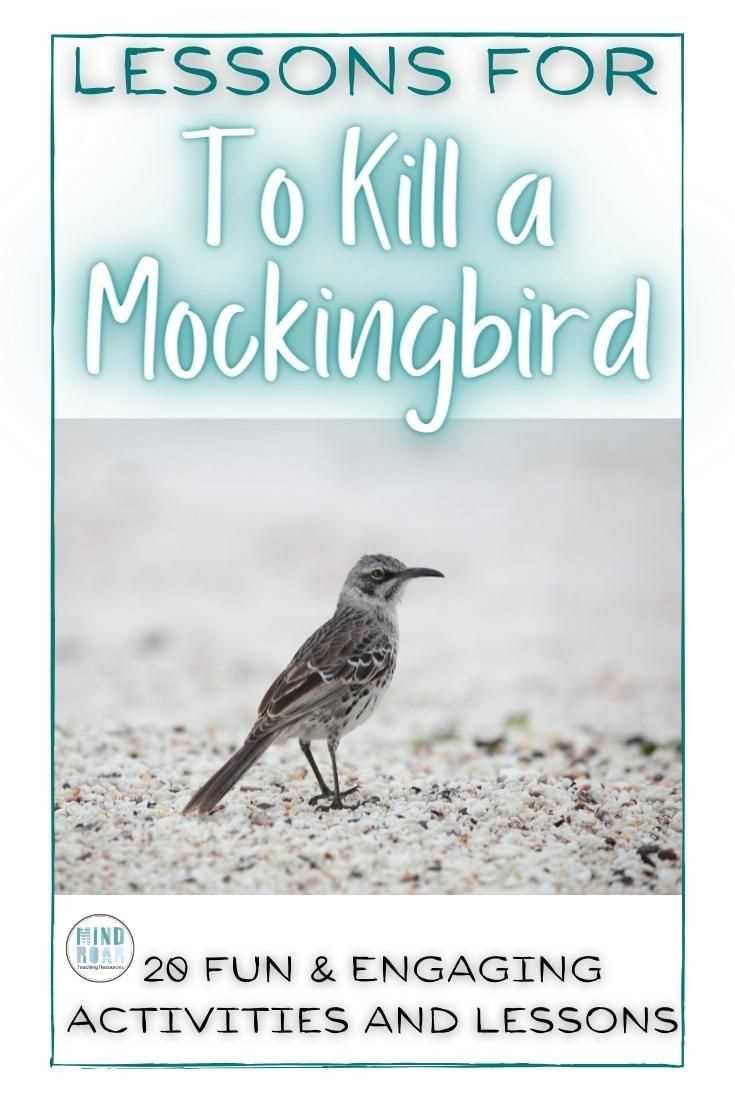
Bob Ewell’s accusation against Tom Robinson is the catalyst for the central conflict of the story. Ewell falsely claims that Tom assaulted his daughter, Mayella, setting in motion a trial that reveals the deep racial divides in the community. Ewell’s motivation is rooted in his desire to protect his family’s reputation and uphold his sense of superiority, despite the lack of evidence supporting his claims.
His Actions Towards Atticus Finch
As the trial unfolds, Bob Ewell’s antagonistic behavior becomes more pronounced. After losing the case, Ewell seeks revenge against Atticus Finch, who he blames for exposing the lies of his family. His harassment of Atticus, as well as his eventual attempt to harm Atticus’s children, demonstrates the lengths to which he is willing to go to preserve his pride and sense of power.
Bob Ewell’s role as the antagonist is not merely one of personal malice, but rather an embodiment of the broader social and racial tensions that define the story. His actions create a powerful contrast to the moral integrity of characters like Atticus Finch, highlighting the ongoing struggle between good and evil, justice and injustice, in a society rife with inequality.
Miss Maudie’s Impact on the Story

Throughout the narrative, Miss Maudie serves as a key secondary character whose influence on the main characters, especially Scout and Jem, shapes their understanding of morality, justice, and human nature. Her wisdom and kindness provide a stark contrast to some of the more negative influences in the town, and her role highlights the importance of having strong, positive role models in a community plagued by prejudice and injustice.
Miss Maudie’s impact on the story extends beyond her personal relationships with the Finch family. As a character, she acts as a voice of reason and a source of emotional support, offering valuable lessons to the younger characters. Through her, Scout and Jem learn important life lessons about integrity, standing up for what is right, and the complexities of human nature.
Miss Maudie’s Role as a Mentor
As a trusted friend of the Finch family, Miss Maudie plays an essential role in guiding Scout and Jem through difficult situations. Her words of wisdom offer perspective and help the children navigate the challenges they face. Some key lessons include:
- Respect for others: Miss Maudie teaches the children to respect others, even when they hold different beliefs or behaviors, helping them understand the importance of empathy.
- Standing up for justice: Miss Maudie supports Atticus in his efforts to defend Tom Robinson, teaching the children about moral courage and the fight for justice in a world filled with prejudice.
- Understanding the flaws of society: Through her discussions, Miss Maudie helps Scout and Jem recognize the flaws in the community, including racism and hypocrisy, while encouraging them to rise above such divisions.
Her Influence on the Community’s Morality
Miss Maudie’s impact extends to the wider town of Maycomb. While the town is often divided along racial and social lines, Miss Maudie’s actions and words promote a sense of fairness and kindness that contrasts with the prevailing attitudes. She is one of the few people who consistently stands up for what is right, especially when it comes to defending the integrity of characters like Atticus Finch and Tom Robinson. Her unwavering belief in justice and fairness makes her an important moral anchor in the story.
Ultimately, Miss Maudie serves as an important figure in the story, both for her influence on the main characters and her contribution to the themes of morality, justice, and integrity. Through her guidance, Scout and Jem are able to gain a deeper understanding of the complexities of human behavior and learn the importance of standing up for what is right, even in the face of adversity.
How Prejudice Affects Character Choices
Prejudice plays a significant role in shaping the decisions and actions of the characters throughout the story. It influences not only how individuals are viewed by others but also how they perceive themselves and the choices they make in response to societal expectations. The deep-seated biases present in the community lead to complex moral dilemmas and challenge the integrity of various characters, forcing them to navigate difficult decisions under the weight of societal pressure and injustice.
In this context, prejudice is not just an abstract idea but a powerful force that drives the actions of the townspeople, as well as the main characters. It leads to both overt and subtle discrimination, causing individuals to act in ways that reflect the racial, social, and economic divisions of the time. This section will explore how prejudice affects the personal choices of key characters, revealing how deeply ingrained biases shape their behaviors and decisions.
The Impact of Prejudice on Atticus Finch
Atticus Finch, a central figure in the story, faces the challenge of defending Tom Robinson, a black man wrongly accused of a crime. His decision to take on this case places him in direct opposition to the prevailing racial prejudices of Maycomb. Despite knowing the social consequences of his actions, Atticus chooses to stand by his moral beliefs and uphold justice. This decision, however, isolates him from much of the community, highlighting how deeply rooted racial bias can affect not only the accused but also those who fight for fairness.
- Defending what is right: Atticus’s choice to defend Robinson, despite knowing the likely outcome, demonstrates his unwavering commitment to justice, even in a society rife with discrimination.
- Personal sacrifice: By challenging racial prejudices, Atticus faces ridicule and hostility, showing the personal cost of standing up for what is right in a biased society.
Prejudice’s Influence on Scout and Jem
The younger characters, Scout and Jem, are deeply affected by the prejudices they witness in their community. While initially sheltered from the complexities of racism, they are soon forced to confront these harsh realities, particularly through their interactions with Tom Robinson’s trial and the way others view their father’s actions. The experience forces them to question their own beliefs and morals, as they come to terms with the pervasive nature of bias.
- Learning from their father: Scout and Jem observe how their father handles prejudice with dignity, which shapes their own understanding of right and wrong in a biased society.
- Loss of innocence: As they witness the injustices of the trial, both children lose their childhood innocence and begin to recognize the unfairness that underpins many of the choices people make.
How Prejudice Affects the Community

The town of Maycomb is itself a character in the story, shaped by its collective biases. Prejudice influences the actions and choices of its residents, from the unjust treatment of Tom Robinson to the way people view Atticus’s efforts to seek justice. The impact of these prejudices is far-reaching, causing division, fear, and inequality. Even the most well-meaning individuals are sometimes forced to make choices that reflect the deeply ingrained discrimination that defines the society in which they live.
- Groupthink and social pressure: The community’s collective prejudices often push individuals to conform to biased opinions and actions, even when they know these choices are wrong.
- The cost of standing up: Those who challenge societal norms, like Atticus Finch, face significant personal and social costs, showing how prejudice affects not just individuals but the community as a whole.
In conclusion, prejudice deeply influences the characters’ choices, forcing them to make difficult decisions that often come with personal sacrifice and social alienation. Whether it’s the moral dilemma faced by Atticus Finch, the loss of innocence for Scout and Jem, or the oppressive force of societal bias on the people of Maycomb, the impact of prejudice shapes the entire narrative, emphasizing the far-reaching consequences of racial and social inequalities.
Lessons Learned from the Novel
The narrative provides valuable insights into human nature, justice, and morality, with lessons that resonate beyond the story’s time and place. Through its characters and events, the work explores how prejudice, courage, and empathy shape decisions and relationships. These themes offer readers a deeper understanding of the world around them, encouraging self-reflection and a commitment to fairness, tolerance, and integrity.
At the heart of the story are important life lessons that challenge individuals to question their assumptions and to act with compassion and justice, even in the face of adversity. The experiences of the characters serve as a powerful reminder of the complexities of human behavior and the importance of standing up for what is right.
Empathy and Understanding Others
One of the most significant lessons from the novel is the importance of empathy–the ability to understand and share the feelings of another. This lesson is emphasized through the character of Atticus Finch, who teaches Scout and Jem the value of seeing the world from someone else’s perspective. By learning to “climb into another person’s skin and walk around in it,” the characters are able to overcome their biases and develop a deeper understanding of others.
- Seeing beyond stereotypes: The characters are reminded to look beyond outward appearances and preconceived notions, helping them form more authentic relationships.
- Compassion in the face of adversity: Empathy enables individuals to act with kindness, even toward those who may be misunderstood or wronged by society.
The Importance of Standing Up for Justice
Another crucial lesson from the story is the importance of standing up for justice, even when the odds are against you. Atticus Finch’s role as a moral hero is a central example of how personal integrity and the pursuit of what is right often require courage and sacrifice. His defense of Tom Robinson, despite knowing the difficulty of winning the case, demonstrates the strength it takes to act according to one’s beliefs in the face of overwhelming opposition.
- Fighting against injustice: The novel teaches that it is not enough to remain silent in the face of wrongdoing; individuals must actively work to correct injustices, even when it is unpopular.
- Personal integrity over public opinion: Atticus’s example shows that moral integrity should never be compromised, even when one faces criticism or social alienation.
In conclusion, the novel imparts profound lessons on the importance of empathy, justice, and moral courage. It encourages readers to reflect on their own actions and choices, urging them to strive for fairness and to stand up for what is right, regardless of the consequences. The enduring relevance of these lessons continues to inspire readers and serves as a call to create a more compassionate and just world.
How to Approach the Assessment
Approaching any comprehensive evaluation requires thoughtful preparation and a strategic mindset. Whether it’s for a literature analysis or a broader review of key themes, understanding how to break down the material and structure your responses can significantly improve performance. Focusing on the major topics, recurring symbols, and essential character developments is essential for success in any test that assesses both your grasp of the text and your critical thinking abilities.
The key to performing well in an evaluation of this nature is to organize your approach. Start by reviewing core concepts such as significant events, character arcs, and central moral lessons. Make sure to recognize how these elements interconnect and contribute to the overarching narrative. A clear understanding of these components will allow you to craft thoughtful, cohesive answers and demonstrate your deep comprehension of the work.
Focus on Major Themes
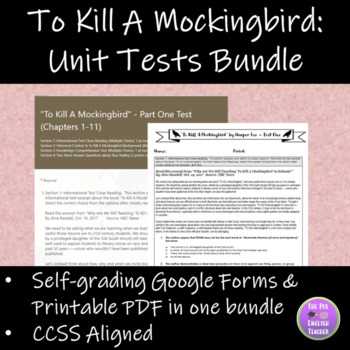
One of the most critical steps is to familiarize yourself with the major themes of the story. These themes are not only central to the plot, but they also provide the foundation for analysis in essay-type questions. Be sure to explore how themes like justice, morality, empathy, and social inequality are portrayed and develop throughout the narrative.
- Review key character actions: Reflect on how characters’ choices illustrate these themes and the consequences they face.
- Identify symbolic moments: Pay attention to objects, settings, and events that hold deeper meanings, such as the symbolism of certain figures or places.
Organize Your Study Material
Effective organization of your study material can make a significant difference. Start by breaking down the content into manageable chunks. Focus on specific chapters, character developments, and thematic sections. Creating summary notes or flashcards for key quotes and scenes can also aid in quick recall during the assessment.
- Review study guides: If available, use study guides or notes to consolidate your knowledge and reinforce important concepts.
- Practice answering questions: Anticipate potential questions based on past evaluations or discussion topics. Practice writing clear and concise responses.
Ultimately, a methodical approach, coupled with a deep understanding of the key elements, will help you tackle the test with confidence. Stay organized, stay focused, and be sure to connect the dots between the events, themes, and character choices. This will not only assist in crafting thoughtful responses but also demonstrate a comprehensive understanding of the material.
Effective Study Tips for Success
Achieving success in any assessment requires more than just memorizing facts–it requires strategic planning and efficient study techniques. To perform well, it’s essential to adopt study habits that foster understanding, enhance memory retention, and build confidence. Whether reviewing themes, characters, or key plot points, implementing the right strategies can make a significant difference in your ability to recall and apply what you’ve learned.
One of the most effective methods for mastering material is active engagement. Simply reading through notes or textbooks may not be enough. Instead, try to immerse yourself in the content by creating connections, practicing recall, and testing your knowledge. These techniques ensure a deeper understanding and better preparation for any type of assessment.
1. Organize Your Study Sessions
Start by breaking down the material into manageable sections. Don’t overwhelm yourself by attempting to study everything at once. Focus on one theme, character, or event at a time. This focused approach will help retain information more effectively.
- Create a study schedule: Divide your time evenly across topics and allow enough time for review. Prioritize areas where you need more practice.
- Use study aids: Flashcards, summaries, and mind maps are excellent tools to help visualize and reinforce key points.
2. Engage in Active Recall and Practice
Passive reading is often not sufficient for mastering complex material. Instead, try actively recalling key points, events, or quotes from memory. This technique strengthens neural connections and helps solidify the information in your mind.
- Test yourself: Try answering questions without looking at your notes, or create practice questions based on the material. This helps build confidence and identifies areas that need improvement.
- Discuss with others: Engaging in discussions with peers can clarify difficult concepts and open up new perspectives.
3. Stay Consistent and Rested
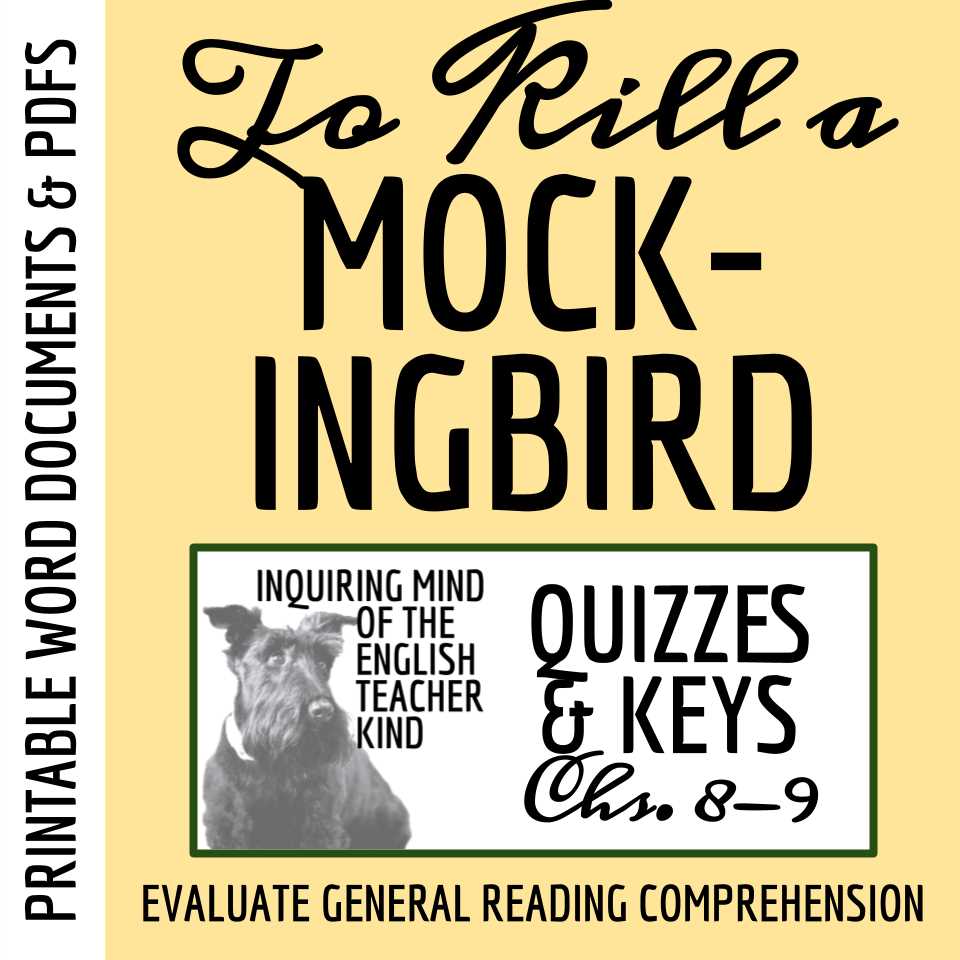
Consistency is key when preparing for any assessment. Rather than cramming the night before, aim for consistent, daily study sessions that allow for gradual learning. Additionally, don’t underestimate the importance of rest. A well-rested mind is more focused and can retain information more effectively.
- Take regular breaks: Study in short bursts of 25-30 minutes followed by a 5-minute break to keep your mind fresh.
- Get enough sleep: Sleep is crucial for memory consolidation, so ensure you’re well-rested before your study sessions.
By staying organized, practicing active recall, and maintaining consistency, you can maximize your study time and ensure you’re well-prepared. These tips, combined with a calm and focused approach, will set you on the path to success.